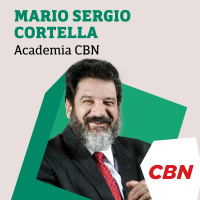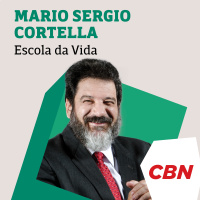Synopsis
Innovation in compliance will bring you interviews with industry leading experts who are changing the way people approach compliance. Host Thomas Fox has practiced law in Houston for 30 years. He is an author and consultant who assists companies with anti-corruption and anti-bribery compliance and international transaction issues. He specializes in bringing business solutions to compliance problems.
Episodes
-
Continuous Improvement in Compliance with Brian Beeghly
04/06/2019 Duration: 16minBrian is the founder of Informed360, one of the most innovative companies Tom has come across in a very long time. Brian’s a little unique in the compliance field in that he’s not a lawyer, but that’s one of the main reasons, coupled with his experience running large programs, that caught the CEO’s eye. He talks about the career path that led him to Informed360.Under the Hood of ComplianceBrian talks about how having a great team working in a compliance department isn’t enough. When he looked ‘under the hood’ of how things were being run, he noticed some major problems. In other words, it was ‘all duct tape and glue.’ There were manual processes, lots of Excel spreadsheets all over the place, and disparate systems and applications that weren’t connected. Pulling data and information together was a painful process. This was what inspired him to create Informed360.The Role of TechnologyFrom risk assessments and disclosures and beyond, Informed 360 grew out of a real need for the compliance industry to catch up
-
Giving Across Borders with Ted Hart
28/05/2019 Duration: 17minToday’s episode is a great one. Not only will we be talking about innovation in the field, but we’ll also address how today’s guest, Ted Hart, gives compliance officers a framework by which to think through issues that they face. Ted is the President and CEO of CAF America and brings 30 years of experience in advising global philanthropy.Ted and CAFCAF has a unique goal: to provide service to the philanthropic community, specifically to those in the United States who want to give abroad but have tax issues to face they don’t quite understand. They’ve been in business for 27 years.Cross Border GivingCAF America worked with several professionals in the market to write “Cross Border Giving.” The goal was to educate on a topic that can be confusing, so each professional wrote a chapter based on their expertise. The book and workbook together provide a great foundation, to which those who wish to donate to charities outside the US can refer.The 3 R’s and 7 Principles of International GivingRegulatory compliance, r
-
Keeping Your Third Parties Secure with Dov Goldman
21/05/2019 Duration: 21minIt’s challenging enough to keep your own business secure. But when you also have hundreds of third-party suppliers, how can you make sure you aren’t vulnerable to attack? Joining us today is Dov Goldman, the Director of Risk and Compliance at Panorays, and on this episode, we’re talking about cybersecurity, and the strategies and measures you can put in place to keep you safe. Panorays Panorays automates your third-party security management. It enables you to easily view and manage the security posture of your third parties — including vendors, suppliers, business partners, agents, and other forms of intermediaries — who form an ecosystem around your company that represents you. You can continuously monitor your ecosystem, and at the same time, ensure compliance with regulations.The New York Department of Financial Services The NYDFS is focused on consumer protection. They regulate many thousands of financial services organizations, and they’re mandating that you do certain things to protect your consumers (f
-
Innovation in Compliance: Episode 75-Taking the Digital Route with Syed Hussain
14/05/2019 Duration: 16minHow do you keep pace with innovation? Returning to the podcast is Syed Hussain, the Co-Founder & CEO at Liquidity Digital, a blockchain-based FinTech firm that’s building an end-to-end digital security system. How does this work and how can it make our organizations more efficient, more compliant, and more profitable? The shift to digital Traditional forms of capital formation are simply not keeping pace with what the capital demands of the markets are. What blockchain enables people to do is take their existing assets, digitize and securitize those assets, and transform them into digital securities. At Liquidity, they’re building a platform that will allow for the issuance of these digital securities, paving the way for capital markets to go and take the digital route. Benefits of digital securityDigital security is now bringing in opportunities that aren’t possible in the traditional world. Because these things are built on top of blockchain, it is inherently a very, very secure protocol. It’s transpare
-
Civility as a Workplace Innovation with Carrie Penman
07/05/2019 Duration: 11minIs there still a place for good manners in today’s ruthless business world? Joining us today is Carrie Penman, the Chief Compliance Officer and Senior Vice President Advisory Services at NAVEX Global. She wrote an article entitled, The Cost of Incivility in the Workplace, and today we’re talking about why manners matter.Why the article: So many people don’t have a good understanding of the fact that how you say something is as — or more — important than what you say. Think about what it’s like to be on the receiving end of the message you have to deliver. How would you want that to be said to you? Rude, abusive, and harassing bullying behavior has been costing organizations big time for decades in terms of decreased productivity, lost top talent, loss of innovation, lower quality customer service, and more. Many of the reports that ethics and compliance officers receive over their hotlines are related to HR matters, and can lead to serious compliance violations. The Era of the Jerk Manager is Over: It was onc
-
Innovative Ways to Communicate Online with Ben Adelberg
30/04/2019 Duration: 17minInnovation comes in many ways, forms and inspirations. Today we consider the basic use of communication as an innovation for compliance. We’re chatting with Ben Adelberg, host of The Back of the Range Golf Podcast, and today he’s sharing his processes, tips, and tricks for innovation and moving forward with whatever it is you’re working on. Ben’s approach:Ben interviews a wide variety of people, so before he ever gets on the phone with them, he does a deep dive. He goes through all of their social media channels, websites they might have been on, books they’ve written — anywhere that might have information on them — and finds out every single thing he can that could potentially lead him to different and unique questions to ask his guests. His goal is to go through the entire episode and ask questions they’ve never been asked, which makes The Back of the Range unique and stand out among all the other golf podcasts.Publicizing the podcast:Publishing a podcast episode is just half the job. It could be the most e
-
How Strong HR Processes Can Mitigate Risk with Deb Muller
23/04/2019 Duration: 20minDo you have HR processes in place? Join us on this episode of the Innovation with Compliance Podcast with Deb Muller, the CEO and Founder of HR Acuity, and we’re chatting about how human resources related technology and processes can help mitigate risks and create a safer workplace for everyone. No rhyme or reason Deb noticed that most of the investigations being done within HR in an organization had no rhyme or reason. There were no processes as to how they should be done. Talking to clients, she recognized the need to incorporate technology and consistency into the investigation lifecycle, because someone can just walk in the door with something to tell you and upend your entire day — not to mention pose an incredible amount of risk for the organization.Having a systemHuman resources are your most expensive resources, yet most companies don’t think about it when they think about risk or compliance. What happens when someone makes an allegation? A proper compliance process will make sure you get to the
-
Leading with Accountability with Sam Silverstein
16/04/2019 Duration: 13minWhat does it mean to be accountable and lead with accountability? Sam Silverstein is a consultant and author whose mission is to empower people to live accountable lives, transform the way they do business, and thrive at extraordinary levels. Join us as we take a deep dive into the subject of accountability and how it can impact the way we live and work. Accountability vs. transparency These are two totally different elements. Transparency is being open and honest: admitting that you have made a mistake and saying you’re on it and fixing it. You’re not trying to hide it or pretend it didn’t happen, you’re just being human. This is critical, and transparency is an element that will help you toward a life of accountability as an individual or as a leader. But accountability is keeping your commitment to people. We talk about it a lot but many people have yet to figure out what it is. Accountability is not a way of doing, it’s a way of thinking, specifically, how we think about people. It isn’t just keepin
-
Making Compliance Training Fun with Andrew Rawson
09/04/2019 Duration: 22minWhat if compliance training didn’t have to be boring? Joining us on this episode is Andrew Rawson, the Chief Learning Officer for Traliant, a compliance training company. Today we’re talking about the future of compliance training: how to make it truly effective, useful, and even fun. The importance of trainingThe last couple of years have seen the intersection of two seismic forces that have created tremendous demand for quality training. The first was the #MeToo movement, which has brought up the whole topic of compliance training around sexual harassment — so much so that it’s become a need to have instead of a nice to have, even in states where it isn’t required. The second was a change in regulations in different states across the country, now requiring more than 10 million people to be trained. Effective compliance trainingThere is a difference between teaching people about the law and teaching them what to do. At Traliant, they wanted to train people how to behave. What do you do when you’re
-
Part 5: The Supply Chain Efficiency Premium
01/04/2019 Duration: 09minIn this concluding Episode V of special five-part podcast series on an innovative approach to managing third party risk we consider how to use of this information going forward. I have been joined by James Gellert, the Chairman and Chief Executive Officer of Rapid Ratings International, which is sponsor of this special series. Our conversation has been on helping companies manage their third-party supply chains through financial health. The Rapid Rating approach is incredibly innovative, with both a series of products and services that should be considered by the compliance practitioner. In this Episode 5, we discuss the supply chain efficiency premium. Some of the highlights include:At the end of the day, companies want to continue working with their suppliers. The more companies can help them through any times of difficulty, the more it benefits everyone.This isn't just about triage and problems. It’s about creating the strongest chain of suppliers in one ecosystem that can grow with your business.The
-
Part 4: What are the challenges for Supply Chain Risk Management in 2019?
01/04/2019 Duration: 09minWe are on Episode IV of special five-part podcast series on an innovative approach to managing third party risk. This week I am joined by James Gellert, the Chairman and Chief Executive Officer of Rapid Ratings International, which is sponsor of this special series. Our conversation will be on helping companies manage their third-party supply chains through financial health. The Rapid Rating approach is incredibly innovative, with both a series of products and services that should be considered by the compliance practitioner. In this Episode 4, we discuss some of the challenges Gellert sees in 2019 and going forward. Some of the highlights include:You can’t manage risks that are unknown. It’s not just about being able to identify the risks. It’s being able to action the data that emerges, and linking all those through the business units of a company. There are increasing number of risks and complexity of business relationships.Changes in capital markets and rising interest rates with a complicated g
-
Part 3: Third Party Expansion
01/04/2019 Duration: 09minWe are on Episode III of special five-part podcast series on an innovative approach to managing third party risk. This week I am joined by James Gellert, the Chairman and Chief Executive Officer (CEO) of Rapid Ratings International, which is sponsor of this special series. Our conversation is about helping companies manage their third-party supply chains through financial health. The Rapid Rating approach is incredibly innovative, with both a series of products and services that should be considered by the compliance practitioner. In this Episode 3, we discuss the issue of third-party expansion. Highlights include:The definition of “third party” is expanding, which only makes life more complicated for anyone trying to do third party risk assessments.There are a lot of risks that people can't get around to managing because they can't even identify which companies are taking risks.The definition of third parties has expanded out to nth tier, adding an additional layer of complexity to risk management. All
-
Part 2: Criticality and Extending the Reach of Compliance
01/04/2019 Duration: 10minIn this special five-part podcast series on innovation in managing third party risk, I am joined by James Gellert, the Chairman and Chief Executive Officer (CEO) of Rapid Ratings International, which is sponsor of this special series. Our conversation will be on helping companies manage their third-party supply chains through financial health. The Rapid Rating approach is incredibly innovative, with both a series of products and services that should be considered by the compliance practitioner. In this Episode 2, we discuss the issue of criticality in supply chain and how to assess and manage that risk. Highlights include:How has the definition of criticality expanded?What does this mean for the supply chain professional or the compliance practitioner going forward?Innovation allows companies to manage all of those suppliers and all of those risks in a more cohesive way, creating more ways of doing more with less.If you can identify the risk direction of a company, then you’re able to survey a wider spectrum
-
Part 1: Introduction to Supply Chain Financial Health
01/04/2019 Duration: 10minWelcome to a special five-part podcast series on innovative in managing third party risk. This week I am joined by James Gellert, the Chairman and Chief Executive Officer (CEO) of Rapid Ratings International, which is sponsor of this special series. Our conversation will be on helping companies manage their third-party supply chains through assessing financial health. The Rapid Rating approach is incredibly innovative, with both a series of products and services that should be considered by the compliance practitioner. In this Episode 1, we begin with a discussion of why managing your supply chain risk is so critical in today’s business environment. Highlights include:What is supply chain financial health?Managing supply chain risk is critical in today’s economy.If the suppliers that you’re embedding into your business aren’t resilient or strong for the long term, then you’re baking problems into your ecosystem.How can you work to extend the reach of compliance? By understanding the business imperative and bu
-
Marketing through Podcasting with Gordon Firemark
26/03/2019 Duration: 18minWhat do you get when you mix podcasting with the law? Joining us on this episode is Gordon Firemark, an attorney in Los Angeles with a background in entertainment and podcasting law, and a podcaster himself. Find out how you can use podcasting to ethically market your firm, and how to protect yourself legally in this space. The growth of podcasting It’s developed as a really remarkable communications tool but is still underutilized in many ways. It’s very exciting and a great opportunity for lawyers and businesses that are looking to reach their audiences in a different yet very powerful and effective way.Legally, the issues are similar to the media law area: intellectual property, ownership, business entities, partnerships that happened by accident. There was once a major case where somebody filed a patent on podcasting technology, but now it’s been resolved. Hopefully, that opens things up for people to start using it as a medium.A marketing tool Because Gordon does the show every month, that
-
Nimble and Strategic Compliance with Patrick Conroy
19/03/2019 Duration: 17minOn this episode of the Innovation in Compliance Podcast, we have Patrick Conroy, RegTech Leader and Managing Director at ACA Technology. What does ACA do, what technologies and solutions do they offer, and how can you leverage them to make your compliance programs more strategic, nimble, and proactive? Professional background Patrick shares how he got his start in financial services, to working at the largest global banks in the world, and honing his skills as a compliance practitioner and embracing technology. Through that lens, he started building compliance services and looking at different emerging technologies, as well as focusing on RegTech at the firm. ACA products and services ACA’s solutions are derived from subject matter expertise with tech enablement around it, to help firms develop and architect their overall compliance programs. They focus across a few different verticals: compliance risk, advisory consulting, managed services, education and training, and technology solutions
-
Using AI to Detect Bad Actors with Brandon Carl
12/03/2019 Duration: 13minCan you pick up misconduct signals from a conversation? Joining us today is Brandon Carl, the Vice President of Product Management at Digital Reasoning. He oversees their product portfolio and brings together research, machine learning, and development for their audio analytics and conduct surveillance, and he’s here to share how artificial intelligence can change the way we do compliance.Digital Reasoning SolutionsDigital Reasoning got its start working with government institutions on identifying bad actors. When they shifted over into conduct surveillance, it was a very natural foray into looking for misconduct or bad actors within financial markets. The key behind all these regulations is to instill confidence in people participating in markets and make sure that the market is protected and liquid and that they’re getting fair prices.Finding signals When you take a look at bad actors in general, you tend to find two buckets of people: 1) Negligent bad actors who don’t have bad intentions, but are probably
-
The ‘Gmail for Accounting’ with Ian Crosby
05/03/2019 Duration: 18minWhy does accounting have to be so complicated? That was the question today’s guest, Ian Crosby, asked himself. And from that question, America’s largest bookkeeping service for small businesses was born. Ian is the co-founder and CEO of Bench, and he’s talking about taking the grounded route to innovation — and how it’s always about the people. Humble (and frustrated) beginningsIan was a bookkeeper in college and came across the problem of: how is there not a place you can just go on the internet and get perfect bookkeeping out? People have to either figure it out themselves, or hire an expert and have no idea if that person is good or doing it right. Why is there no “Gmail for Accounting”? This is a huge problem that’s been overlooked and he couldn’t get the idea out of his head, so he jumped right into it.The Bench brand of business leadership At a surface level, bookkeeping can seem really ‘back office-y,’ but when people get on top of their finances, they get a sense of direction and feel p
-
Managing the Extended Enterprise with Dan Kinsella
26/02/2019 Duration: 21minYour organization’s ecosystem is probably bigger than you think, and a big ecosystem presents bigger risks. Dan Kinsella is the Extended Enterprise Risk Management Leader at Deloitte Risk and Financial Advisory, and today we’re talking about managing these risks across the extended enterprise. The “Extended Enterprise” When we think about our organization, we have to think beyond our four walls: the extended enterprise is everything that we’re connected to in our environment.As businesses, we are leveraging more third parties than we ever have. Our objective is to make our organizations better, cheaper, and faster at driving bottom line improvement, and we can do that by leveraging these third parties in a more consistent and cohesive fashion. Types of extended risksForeign corrupt practices, laws, and regulations around the ability to conduct business globally is one of the top risks that global organizations focus on, and next on the list would be cyber or information technology risks.There are usually a ba
-
Keeping Your Documents Secure with Tomas Suros
19/02/2019 Duration: 15minWhat are you doing to keep your documents secure and your data protected? Today we have Tomas Suros, Chief Solutions Architect, Practice Automation, at AbacusNext. They’ve developed an innovative, all-in-one system for the legal and compliance field that makes work more efficient and more secure. Today we’re learning more about the system and what it can do.Tomas’s background: when law meets techTomas attended law school at the time the internet boom was in full swing, with his classes applying their concepts to the internet, back when it still had no jurisdictional boundaries. Right after graduation, he worked for Pandora, a streaming radio entity and his first experience with the technology of law, and eventually, his interests turned to leveraging technology for compliance and developing software tools for lawyers. AbacusNext: What is it, and how does it work?AbacusNext uses software tools to protect data and give companies efficient access to them through a private cloud environment. Having a private clou















